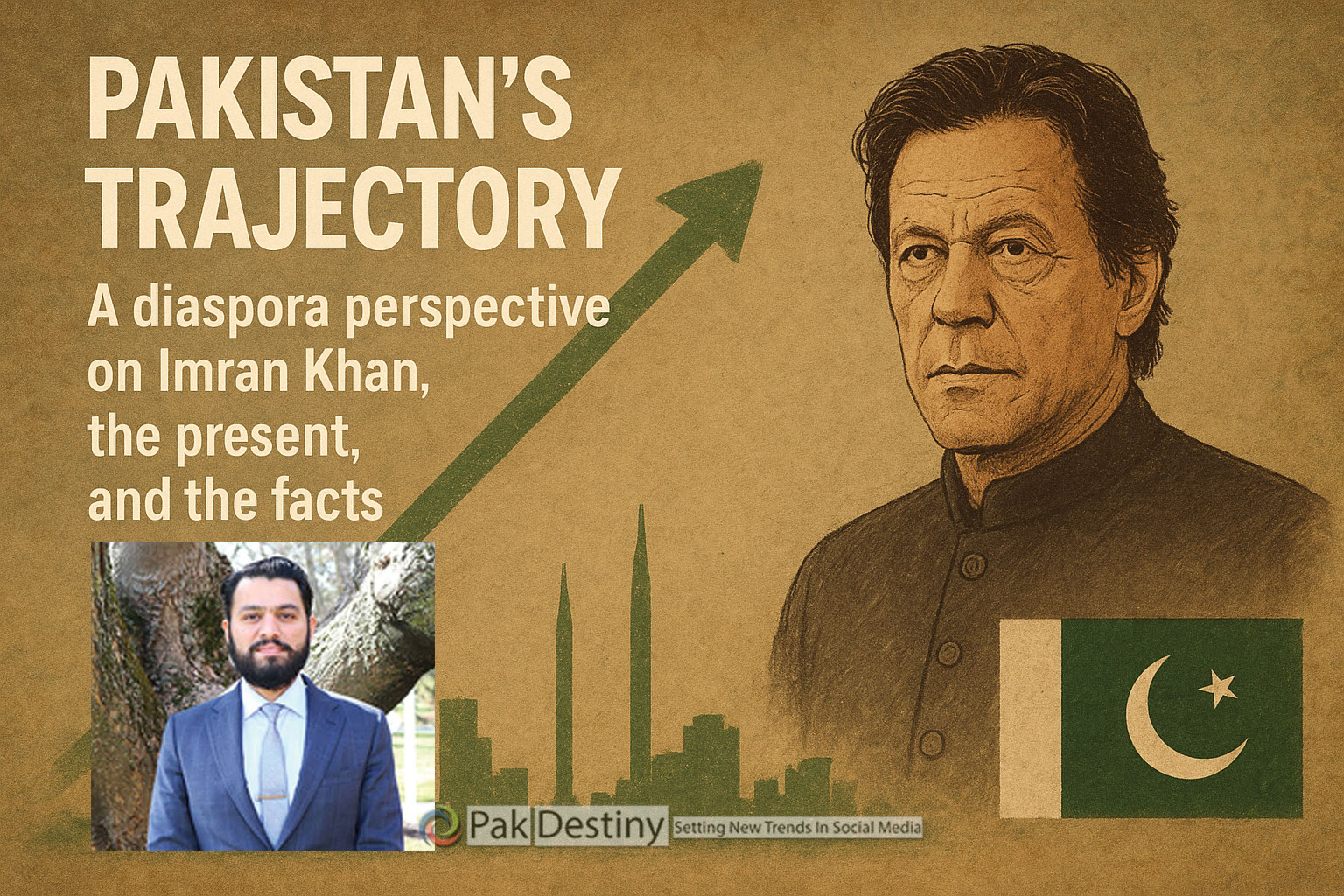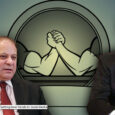
Dr Sabooh Mubashar
I want to begin with a disclaimer. I have no allegiance to any political party in Pakistan. I am part of the Pakistani diaspora, having lived in the United States for 26 years. In many ways, I love my country of origin deeply, but I also view it now through the eyes of an outsider — one who follows Pakistan closely through the lens of international media: the BBC, The New York Times, and a range of U.S. and world outlets. What follows are simply my impressions as an engaged observer who turned to the facts to test those impressions.
I encourage every reader to fact-check for themselves.
I also want to make clear that I admire Imran Khan. As a lifelong cricket fan, I grew up watching him, and I recognize his personal stature. In fact, I think he embodies what I call the “three H’s”: Honest, Hubbul Watan (love of country), and Handsome.
Those are no small qualities, and they explain why he continues to inspire such devotion. Having said that, when I think about leadership, I also have to weigh results and competence. Running a nation requires more than personal charisma or integrity; it requires the ability to stabilize, to deliver, and to guide a country through crises. That is the lens I use in looking at Pakistan’s recent trajectory.
Economically, Imran Khan’s tenure began with optimism and saw a sharp rebound after the COVID downturn. FY2020–21 growth was revised to about 5.8 percent and FY2021–22 to around 6.1 percent. But these gains proved fragile. By 2022, the economy was overheating, reserves were plummeting, and inflation was accelerating. By May 2023, Pakistan posted year-on-year inflation near 38 percent, the highest in its history. The rupee fell to record lows, and investor confidence evaporated.
The stock market reflected this volatility, with the KSE-100 index closing FY2022 around 41,500 and struggling near 40,000 later that year as political instability deepened.
Some argue that COVID explains this collapse, but I think the evidence points otherwise.
COVID was global; Pakistan was not unique in facing the pandemic. Many economies
rebounded sharply once restrictions eased, and in some cases the crisis even fueled productivity. Pakistan too saw a rebound, but its underlying structural weaknesses — debt, subsidies, governance, energy dependence — resurfaced immediately. The result was that the post-COVID period tipped into a fiscal and financial debacle that was more about Pakistan’s fragility than the virus itself.
Under the current government, the picture looks different. In September 2024, Pakistan entered a new 37-month IMF Extended Fund Facility, and in May 2025, the IMF completed the first review, releasing about $1 billion and approving $1.4 billion under its climate
resilience window. Inflation has come down dramatically from its 2023 highs, the rupee has steadied, and reserves have improved. Investors have noticed: by late September 2025, the KSE-100 crossed 162,000 points, nearly quadruple the level where it stood at the end of
Khan’s government.
Growth remains modest at about 2.6–2.7 percent, and poverty has inched up toward 25 percent, but the shift from free fall to fragile stability is undeniable.
On the security front, Khan’s years were marked by tense but contained relations with India.
After the Pulwama/Balakot crisis of 2019, hostilities remained frozen, with occasional
flare-ups but no open war. In contrast, the May 2025 crisis saw four days of intense hostilities involving missiles and drones, followed by a U.S.-facilitated ceasefire. Both countries claimed victory. Analysts caution that such claims were exaggerated, but the Pakistani government
was able to project resilience and deterrence, which mattered politically at home.
Diplomatically, the contrast is just as stark. Under Khan, relations with Saudi Arabia cooled when Pakistan pressed for stronger OIC action on Kashmir, and Riyadh responded by reducing financial support. At the same time, ties with the United States soured, particularly after Khan’s “absolutely not” stance on American bases and his later rhetoric blaming
Washington for his removal. Pakistan ended up isolated and increasingly dependent on China and occasional bailouts from Qatar. Today, the current government has repositioned the
country.
Relations with Washington have warmed, IMF cooperation has resumed, and most
significantly, Pakistan and Saudi Arabia signed the Strategic Mutual Defense Agreement on September 17, 2025. The pact explicitly states that aggression against one shall be considered aggression against both. While details remain vague and there is no clear
evidence that it extends to nuclear guarantees, the symbolism is profound. Coupled with
Saudi investment interest in Gwadar, Reko Diq, and refinery projects, this agreement marks a reintegration into the Gulf’s security and economic orbit.
The timeline of Pakistan’s financial crisis underlines the scale of the shift. In 2020, COVID caused disruption but Pakistan avoided collapse. In 2021, the economy rebounded with growth near 5.8 percent, followed by 6.1 percent in 2022. But by mid-2022, political turmoil,
floods, and global commodity shocks worsened already mounting imbalances.
By May 2023, inflation hit 38 percent and reserves neared exhaustion. In September 2024, the IMF program restarted stabilization, and by 2025 inflation was cooling, the rupee was steadier, and the KSE-100 was hitting record highs.
The contrast is clear. Imran Khan left office with Pakistan facing runaway inflation, collapsing reserves, and frayed relations abroad. Today, inflation is down from crisis highs, reserves have strengthened, the stock market is surging, and Pakistan has signed its most
consequential defense pact in decades. None of this erases Imran Khan’s charisma, honesty, and patriotism; it simply underscores that leadership must also deliver stability and results.
From an outsider’s perspective, Pakistan’s trajectory today looks cautiously upward.
Fragile, yes, but it is a reversal from the brink.

Sabooh Mubashar is a practicing physician in the United States of America.






